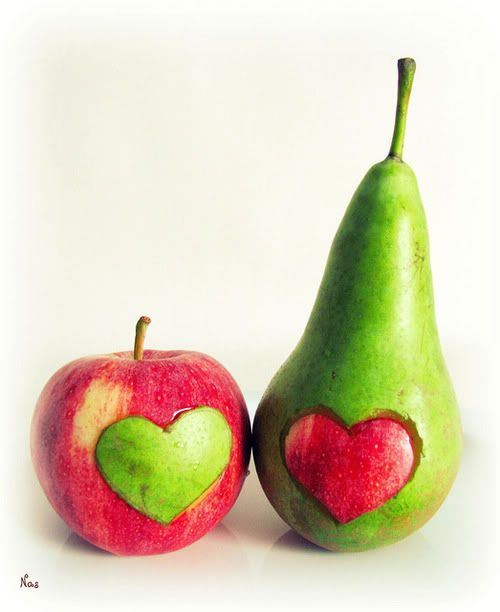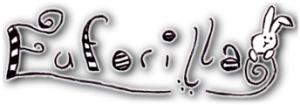
I won’t lecture you with history of clothing, otherwise I’ll have to start from 17th century where robes were actually indicative of people’s statuses (monks most of all), but finally common people were able to afford used and coloured clothes (thrift stores are nothing new!), taking the exclusive away from noble families, where a dress was some piece of craft to pass on for generations.
You just need to look at statues and paintings to realize how the concept of female beauty is constantly changing: plumpy pre raphaelites nynphs are really far away from skinny and androgine 80’s top models.
It’s funny to notice how in times where the economy was critic a beautiful woman was a full figured one, while in times of economical boom skinnier women were “minimal”.
Anywaaaay…
Starting from the premise that willing to have your own style is also willing to look good, let’s deal with different body shapes and how to address them.
First thing first: in your bones, in the shape of your nose, in your shoulder width, in your hair colour there are your parents, your grans, their grans, and up to primordial broth, be proud of that.
Secondly: any bodytype has pro and cons. Forget about teen photoshopped models, they are teen and photoshopped, therefore surreal.
Third: it doesn’t matter if online you find written that your body type can’t wear that thing. If you like it wear it anyway, you’ll look good for how it makes you feel, and most of all we’re here to discuss personal style, not how to look good at a job interview! Can I add one thing? Dressing up someone that looks like a coat hanger is fine, we’re all good in dressing up perfect Barbie, but dressing up well body shapes that are outside beauty standards (who the heck decided them anyway???) it’s a bit more tricky. Very good designers should really show their skills on that!!! U_U
Fourth thing: here comes the corny and cheesy sentence: stand up straight and smile. It works. Period. I don’t want to hear you complain. Tomorrow morning, when you wake up with a crazy hairdo and a crumpled pyjama, drag yourself to the bathroom, look at yourself in the mirror, straighten your back and smile at yourself. I grant you’ll feel a total moron, but I grant you’ll also see a great difference. Promise!
Fifth: there is nothing hard, it’s just a matter of optical illusion and proportions.
I think that by now everyone already knows what looks best on himself/herself, but a little reminder does no harm!
Since I don’t want to, and I’m not able to, give tips and tricks for any body type -things you can find with plenty of details with a simple web research- I’ll just sum up general pointers, also because I think that labelling body types is not that automatic (let’s say “apple woman”, you always read about focusing on the legs… what if she also has short legs, or way too long legs? She’ll end up with a dispoportionated torso or so…).
I was talking about proportions and optical illusion: to make your shoulders larger to match the hips, to make your legs longer, or anything of the sort, there are a few general rules that can be adapted to anything.
1) Proportion between shoulders, waist and hips, and between legs, torso and neck. To do this you need to play with cuts, colours and patterns of your clothes. You “hide” what you want to conceal, or to look smaller, shorter or thinner. You “show off” what you want to underline, to look bigger, taller or thicker.
2) Any advice you find can backfire you, you need to evaluate each and every case and use some common sense: a soft and drapy (oohh look at my words, I sound pro XD) shirt may hide a little bit of belly, but if it’s too baggy will make you look bigger (or even bonier in your older brother clothes… wonder how I know that…). Or tight jeans may flatter your legs, but if they’re too tight they will just squeeze you (never forget the comfort of well fitting clothes). Can you see what I mean when I say backfire?
3) Things to “show off” and underline: patterns, bright vivid colours, details like embroideries, pokets, patches, seams, details, beads, zippers, buttons and so on. These are all things that will draw your attention, your eyes catch those things first.
4) Things to “hide” and conceal: dark, desaturated and solid colours, no patterns, smooth surfaces, smooth fabrics, no details, no buttons, no nothing. If there’s nothing to catch your attention your eyes will glide over.
5) Double things: there are things that may help to conceal or to underline, it depends on how you use them, on your body type. Things like the waist and legs of your jeans, the neck and sleeves of shirts, A lot of different pieces (like boots, jeans, long sweater and short jaket will) break the silouhette and make you look shorter, while a few solid pieces (high waisted trousers that cover your shoes too) will make you look taller. It’s up to you. Then there are stripes: a thick orizontal stripe underlines and makes bigger, a thin vertical line elongates and looks thinner. It’s up to you decide if the belt to underline your waist is better thick or thin, and if you want straight bootcut jeans or skinny ones!
Google always helps 😛
Me? I think I’m a rectangle, as they say, though not as tall. There is nothing that sticks out more than else, not even hair
You just need to look at statues and paintings to realize how the concept of female beauty is constantly changing: plumpy pre raphaelites nynphs are really far away from skinny and androgine 80’s top models.
It’s funny to notice how in times where the economy was critic a beautiful woman was a full figured one, while in times of economical boom skinnier women were “minimal”.
Anywaaaay…
Starting from the premise that willing to have your own style is also willing to look good, let’s deal with different body shapes and how to address them.
First thing first: in your bones, in the shape of your nose, in your shoulder width, in your hair colour there are your parents, your grans, their grans, and up to primordial broth, be proud of that.
Secondly: any bodytype has pro and cons. Forget about teen photoshopped models, they are teen and photoshopped, therefore surreal.
Third: it doesn’t matter if online you find written that your body type can’t wear that thing. If you like it wear it anyway, you’ll look good for how it makes you feel, and most of all we’re here to discuss personal style, not how to look good at a job interview! Can I add one thing? Dressing up someone that looks like a coat hanger is fine, we’re all good in dressing up perfect Barbie, but dressing up well body shapes that are outside beauty standards (who the heck decided them anyway???) it’s a bit more tricky. Very good designers should really show their skills on that!!! U_U
Fourth thing: here comes the corny and cheesy sentence: stand up straight and smile. It works. Period. I don’t want to hear you complain. Tomorrow morning, when you wake up with a crazy hairdo and a crumpled pyjama, drag yourself to the bathroom, look at yourself in the mirror, straighten your back and smile at yourself. I grant you’ll feel a total moron, but I grant you’ll also see a great difference. Promise!
Fifth: there is nothing hard, it’s just a matter of optical illusion and proportions.
I think that by now everyone already knows what looks best on himself/herself, but a little reminder does no harm!
Since I don’t want to, and I’m not able to, give tips and tricks for any body type -things you can find with plenty of details with a simple web research- I’ll just sum up general pointers, also because I think that labelling body types is not that automatic (let’s say “apple woman”, you always read about focusing on the legs… what if she also has short legs, or way too long legs? She’ll end up with a dispoportionated torso or so…).
I was talking about proportions and optical illusion: to make your shoulders larger to match the hips, to make your legs longer, or anything of the sort, there are a few general rules that can be adapted to anything.
1) Proportion between shoulders, waist and hips, and between legs, torso and neck. To do this you need to play with cuts, colours and patterns of your clothes. You “hide” what you want to conceal, or to look smaller, shorter or thinner. You “show off” what you want to underline, to look bigger, taller or thicker.
2) Any advice you find can backfire you, you need to evaluate each and every case and use some common sense: a soft and drapy (oohh look at my words, I sound pro XD) shirt may hide a little bit of belly, but if it’s too baggy will make you look bigger (or even bonier in your older brother clothes… wonder how I know that…). Or tight jeans may flatter your legs, but if they’re too tight they will just squeeze you (never forget the comfort of well fitting clothes). Can you see what I mean when I say backfire?
3) Things to “show off” and underline: patterns, bright vivid colours, details like embroideries, pokets, patches, seams, details, beads, zippers, buttons and so on. These are all things that will draw your attention, your eyes catch those things first.
4) Things to “hide” and conceal: dark, desaturated and solid colours, no patterns, smooth surfaces, smooth fabrics, no details, no buttons, no nothing. If there’s nothing to catch your attention your eyes will glide over.
5) Double things: there are things that may help to conceal or to underline, it depends on how you use them, on your body type. Things like the waist and legs of your jeans, the neck and sleeves of shirts, A lot of different pieces (like boots, jeans, long sweater and short jaket will) break the silouhette and make you look shorter, while a few solid pieces (high waisted trousers that cover your shoes too) will make you look taller. It’s up to you. Then there are stripes: a thick orizontal stripe underlines and makes bigger, a thin vertical line elongates and looks thinner. It’s up to you decide if the belt to underline your waist is better thick or thin, and if you want straight bootcut jeans or skinny ones!
Google always helps 😛
Me? I think I’m a rectangle, as they say, though not as tall. There is nothing that sticks out more than else, not even hair

*Edit 1/2/11*
I’ve found a blog where every body type is well described, with pictures and examples after advices. Very good indeed!
Pear Shape
Rectangular Shape
Hourglass Shape
Apple Shape
V or Inverted Triangle Shape

This is a GREAT post. It probably one of the few common sense guides to dressing yourself I've had the pleasure of reading. And you are so right about proportion, get proportion right and you'll always look great.
Thank you!
I've been reading a lot of stuff lately, and I realized that it's all about faking proportion where needed and feeling well with yourself, it's not easy, but it's simple!